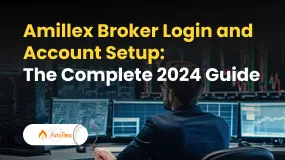简体中文
繁體中文
English
Pусский
日本語
ภาษาไทย
Tiếng Việt
Bahasa Indonesia
Español
हिन्दी
Filippiiniläinen
Français
Deutsch
Português
Türkçe
한국어
العربية
Know the Differences Between Stablecoins and Altcoins
Abstract:Learn the differences of stablecoins and altcoins from this article.

In the ever-evolving landscape of cryptocurrency, two distinct types of digital assets have emerged prominently: stablecoins and altcoins. While both belong to the broader category of cryptocurrencies, they serve fundamentally different purposes and exhibit contrasting characteristics. For traders navigating the complexities of digital markets, grasping these differences is crucial for informed decision-making and strategic investments.

Stablecoins are designed to minimize the volatility that plagues many traditional cryptocurrencies like Bitcoin and Ethereum. The primary objective of stablecoins is to maintain a stable value relative to a specific asset or basket of assets. This stability is typically achieved through pegging to fiat currencies (e.g., USD, EUR) or commodities (e.g., gold).
Stablecoins employ various mechanisms to ensure price stability. Firstly, fiat-collateralized stablecoins are backed by reserves of fiat currency held in banks, providing a 1:1 pegging. Secondly, crypto-collateralized stablecoins are supported by other cryptocurrencies held in reserve, managed through smart contracts to maintain stability. Lastly, algorithmic stablecoins use algorithms that dynamically adjust the coins supply based on demand to stabilize its value.

Contrasting with stablecoins, altcoins (short for alternative coins) encompass a vast array of cryptocurrencies that are not Bitcoin. They vary widely in purpose, function, and underlying technology. Altcoins are often developed to address specific use cases beyond basic peer-to-peer transactions, such as smart contracts, decentralized applications (dApps), or privacy-focused transactions.
Altcoins exhibit a diverse range of functionalities. Firstly, utility tokens are used to access or facilitate transactions within specific networks or platforms (e.g., Ethereum's Ether). Secondly, privacy coins are designed to enhance user anonymity and transaction confidentiality (e.g., Monero, Zcash). Lastly, platform coins serve as the foundation for decentralized applications and smart contracts (e.g., EOS, Cardano).
In summary, stablecoins prioritize stability, mimicking the value of traditional assets, whereas altcoins serve diverse functions beyond mere store-of-value. Stablecoins aim to minimize price fluctuations, making them suitable for transactions and hedging against market volatility. Altcoins, on the other hand, can experience significant price swings influenced by market sentiment and technological developments. Stablecoins are predominantly used for transactions and as a medium of exchange, whereas altcoins can serve various specialized functions within blockchain ecosystems.
In the dynamic realm of online trading and cryptocurrency investment, distinguishing between stablecoins and altcoins is essential for crafting effective trading strategies and managing risk. While stablecoins offer stability and liquidity akin to traditional assets, altcoins present opportunities for innovation and participation in emerging blockchain applications. By understanding these distinctions, traders can navigate the complexities of the crypto market with greater confidence and insight.
As both stablecoins and altcoins continue to evolve alongside regulatory frameworks and technological advancements, their roles in the digital economy are likely to expand, providing new avenues for investors and consumers alike to engage with blockchain technology.

Disclaimer:
The views in this article only represent the author's personal views, and do not constitute investment advice on this platform. This platform does not guarantee the accuracy, completeness and timeliness of the information in the article, and will not be liable for any loss caused by the use of or reliance on the information in the article.
Read more

KVB Global Exposed: High Slippage, Hidden Transaction Fees & Fund Scams
Does the MT4 platform provided by KVB Global minimize your actual profit? Does the broker deny your withdrawal request and instead tell you to deposit more? Have you faced hidden charges on blockchain transactions by the KVB Group? Have you witnessed massive fund scams while trading with the KVB broker? You need to act fast and even take legal assistance to recover your stuck funds. Several traders have alleged that KVB Global is involved in illegitimate trading activities. Check out their complaints in this KVB Global review.

Pocket Broker Review: Traders Furious Over Withdrawal Denials, Account Blocks & Price Manipulation
Does Pocket Broker ask you to verify the payment method repeatedly as you request fund withdrawals? Does the South Africa-based forex broker disallow you the same despite multiple verifications? Does your Pocket Broker forex trading account get blocked without any reason? Do the prices shown on the Pocket Broker login vary from real market prices? These are forex investment scams that Pocket Broker has been allegedly involved in. Read on to find more details.

Is MH Markets Safe or a Scam? Regulation and Fund Security Explained
Is MH Markets a real broker or a potential scam? This is the most important question for any trader thinking about using this platform. Let's give you a straight answer right away. MH Markets is a working broker, not a complete fake scam. Read on to learn more about this crucial due diligence you need to do as a trader.

Amillex Broker Login and Account Setup Guide 2025
You are here because you need clear instructions for the Amillex Broker login process or want to open a new Amillex Broker account. This guide is your complete resource. We provide a direct, step-by-step walkthrough for both new and existing traders. Our goal is to give you the exact information needed to access your account or get started with the platform safely and confidently. This complete manual covers everything from your first login to using your user dashboard and even setting up a practice account.
WikiFX Broker
Latest News
INTERPOL, AFRIPOL Crack Down on Africa Terror Finance
Forex Scam Checker Philippines: Verify Brokers with WikiFX
MH Markets Review 2025: Trading Platforms, Pros and Cons
Mekness Review: Traders Report Alleged Fund Scams & Account Blocks
Octa FX in Pakistan: The Complete Guide to Local Payments, Regulation, and Support
D Prime to Exit Limassol Office Amid Doo Group Restructure
WikiFX Elites Club Committee Concludes Voting! Inaugural Lineup Officially Announced
Fake Trading Platforms Are Spreading Fast Across Asia | How Investors Are Being Tricked
eToro CopyTrader Expands to U.S. Investors
Is MH Markets Safe or a Scam? Regulation and Fund Security Explained
Currency Calculator



